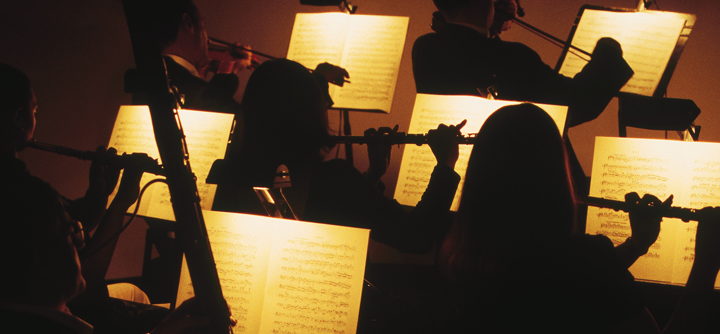A key point to remember while starting to use the revised TEKS is not to reinvent the wheel. You can modify what you have already been doing to elevate your lesson plans to the revised TEKS. You do not have to start entirely over. This module will provide opportunities to practice modifying lessons to fit the revised music TEKS.
Let's complete a quick exercise to apply your new learning.
Scenario: It is the students' first day learning a new piece of music. Your students have never heard, read, rehearsed, or performed this piece.
| Original TEKS |
Revised TEKS |
|
With the original TEKS, your lesson might have included these student expectations:
Music, Grade 6 (c)
(1) Perception. The student describes and analyzes musical sound and demonstrates musical artistry. The student is expected to:
(C) identify music forms presented aurally and through music notation.
(3) Creative expression/performance. The student reads and writes music notation. The student is expected to:
(A) sight-read music in treble and/or other clefs in various keys and meters.
(5) Historical/cultural heritage. The student relates music to history, to society, and to culture. The student is expected to:
(A) classify aurally-presented music representing diverse styles, periods, and cultures.
(6) Response/evaluation. The student responds to and evaluates music and musical performances. The student is expected to:
(A) design and apply criteria for evaluating the quality and effectiveness of music and musical performance.
|
Music, Middle School 1 (c)
(1) Foundations: music literacy. The student describes and analyzes music and musical sound. The student explores fundamental skills appropriate for a developing young musician. The student is expected to:
(D) analyze musical forms presented aurally and through music notation such as binary, ternary, phrasic, rondo, and theme and variations;
(2) Foundations: music literacy. The student reads and writes music notation using an established system for rhythm and melody. The student is expected to:
(D) read music notation using appropriate cognitive and kinesthetic responses such as inner hearing, silent fingering, shadow bowing, or Curwen hand signs;
(3) Creative expression. The student demonstrates musical artistry by singing or playing an instrument, alone and in groups, performing a variety of unison, homophonic, and polyphonic repertoire. The student makes music at an appropriate level of difficulty and performs in a variety of genres from notation and by memory. The student is expected to:
(E) sight-read independently and expressively, with accurate intonation and rhythm, demonstrating fundamental skills and appropriate solo, small ensemble, and large ensemble performance techniques in known keys and rhythms;
|
Lesson with Original TEKS: You might have had the students listen to a recording of the work while following along on their parts, identifying the form of the work. Perhaps you would have had the students sight-read the work. You might have asked students to classify the music they heard according to the style or time period in which it was composed, or you might have had them complete a short written assignment describing the quality of the performance they heard to determine if they believe they are capable of achieving this level of performance.
Lesson with Revised TEKS: Now, look at the lesson in light of the revised TEKS. How will the lesson need to be modified to meet the rigor of the new standards? Note especially the greater specificity in the revised TEKS, as well as the increased rigor and challenge to the students.
Based on the revised TEKS, how would your teaching change? How would you introduce the piece of music to your students?
Possible Responses
- Relate the new work to previously performed or rehearsed music.
- Relate the new work to topics covered in other academic subjects, such as history.
- Analyze the overall form of the work, using musically appropriate descriptors such as overture or theme and variations.
- Sight-read the new work as an assessment of the students' sight-reading skills.
- Have the students listen attentively and critically to a recording of the new work to determine the skills necessary for them to rehearse and perform the piece.
Here are additional possibilities of revised TEKS to address in the lesson, including student expectations that were not present in the earlier version, such as appropriate concert etiquette while listening to a recorded performance and demonstrating appropriate cognitive and kinesthetic responses to music and musical performances.
Music, Middle School 1 (c)
(4) Historical and cultural relevance. The student relates music to history, culture, and the world. The student is expected to:
(B) describe written and aurally presented music representative of diverse styles, periods, and cultures;
(C) identify relationships of music concepts to other academic disciplines such as the relationship between music and mathematics, literature, history, and the sciences;
(5) Critical evaluation and response. The student listens to, responds to, and evaluates music and musical performance in both formal and informal settings. The student is expected to:
(A) demonstrate appropriate concert and stage etiquette as an informed, actively involved listener and performer during live and recorded performances in a variety of settings;
(B) identify criteria for listening to and evaluating musical performances;
(E) demonstrate appropriate cognitive and kinesthetic responses to music and musical performances.






















